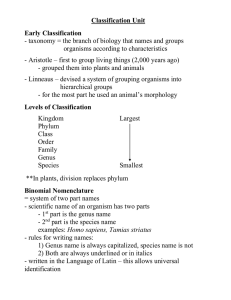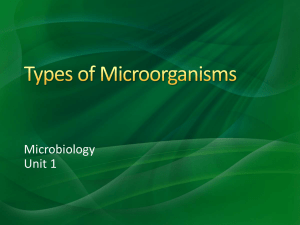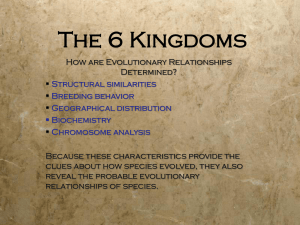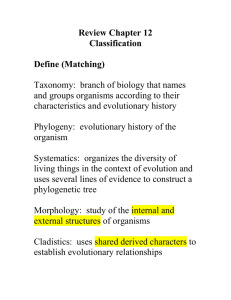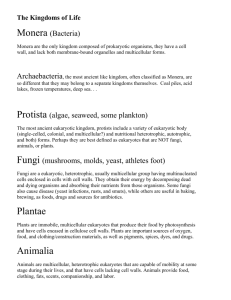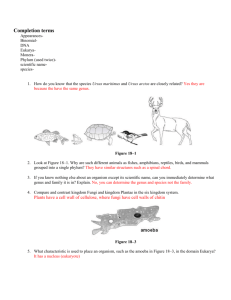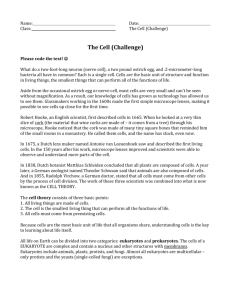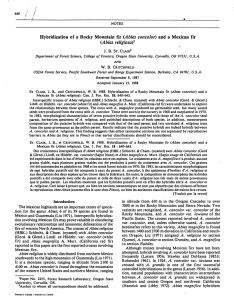Classification: History, Taxonomy, and Six Kingdoms
advertisement
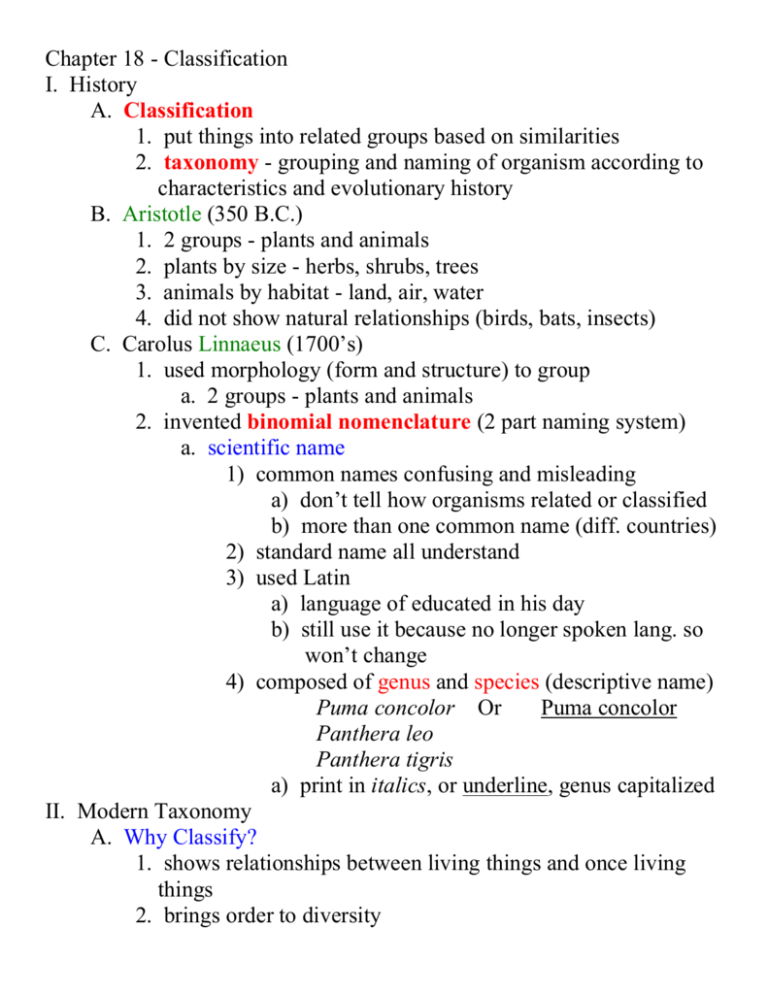
Chapter 18 - Classification I. History A. Classification 1. put things into related groups based on similarities 2. taxonomy - grouping and naming of organism according to characteristics and evolutionary history B. Aristotle (350 B.C.) 1. 2 groups - plants and animals 2. plants by size - herbs, shrubs, trees 3. animals by habitat - land, air, water 4. did not show natural relationships (birds, bats, insects) C. Carolus Linnaeus (1700’s) 1. used morphology (form and structure) to group a. 2 groups - plants and animals 2. invented binomial nomenclature (2 part naming system) a. scientific name 1) common names confusing and misleading a) don’t tell how organisms related or classified b) more than one common name (diff. countries) 2) standard name all understand 3) used Latin a) language of educated in his day b) still use it because no longer spoken lang. so won’t change 4) composed of genus and species (descriptive name) Puma concolor Or Puma concolor Panthera leo Panthera tigris a) print in italics, or underline, genus capitalized II. Modern Taxonomy A. Why Classify? 1. shows relationships between living things and once living things 2. brings order to diversity 3. explains evolutionary patterns 4. gives organisms specific names 5. provides means to identify unknown organism B. Determining Relationships (evidence of evolutionary relationships) 1. similarities in structure (homologous structures) 2. phylogeny - evolutionary history of species (compare structures of mod. day life forms with fossils) 3. similarity of development (embryos and larvae) 4. similarity of biochemistry (DNA nucleotide and amino acid sequences) 5. similarity of behavior patterns (mating calls of frogs that look alike differ) C. Classification Categories (called taxa) 1. derived classification categories (levels of organization) 2. each division is smaller than the previous one (contains fewer types of organisms/more specific) Kingdom - group of related phyla Phylum - group of related classes Class - group of related orders Order - group of related families Family -group of related genera Genus - group of related species Species - a single organism Varieties (subset of species - peaches, nectarines) Subspecies (variation of a species in different geographic areas) 3. the more categories in common the closer the relationship http://www.pbs.org/wgbh/evolution/change/family/ III. The Six Kingdoms A. Archaebacteria 1. unicellular, prokaryotes, anaerobic and aerobic 2. adapted to extreme environments (temp., acidity, salt content) 3. binary fission 4. autotrophic (chemosynthesis) B. Eubacteria 1. unicellular, prokaryotes, anaerobic and aerobic 2. reproduce by binary fission 3. mostly heterotrophs but some are photosynthetic or chemosynthetic 4. cell walls (differ chemically from plants) 5. bacteria and blue green bacteria C. Protista 1. eukaryotes 2. single celled and multicellular 3. some plant-like, animal-like, fungus-like 4. membrane bound nucleus and organelles 5. lack specialized tissues 6. live in moist areas 7. autotrophs and heterotrophs 8. some have cell walls 9. sexual and asexual reproduction 10. Amoeba, Paramecium, Euglena, algae (things not plants, animals, or fungi) D. Fungi 1. heterotrophic, unicellular and multicellular eukaryotes 2. absorb nutrients (decompose dead organisms and wastes) 3. cell walls of chitin 4. sexual and asexual reproduction 5. mostly terrestrial 6. mushrooms, puffballs, rusts, smuts, mildews, molds E. Plantae 1. multicellular, autotrophic (photosynthesis), eukaryotes 2. mostly terrestrial 3. specialized tissues and organs 4. cell walls of cellulose 5. chlorophyll in chloroplasts 6. alternation of generations between diploid sporophyte and haploid gametophyte (sexual cycle with mitosis and meiosis) p. 581-82, 625-28 7. moss, ferns, conifers, flowering plants F. Animalia 1. multicellular, heterotrophic, eukaryotes 2. specialized tissues, some have organs and organ systems 3. nutrition by ingestion 4. sexual reproduction based on meiosis 5. no cell walls or chloroplasts 6. sensory structures or organs 7. muscle systems for movement 8. aquatic and terrestrial
